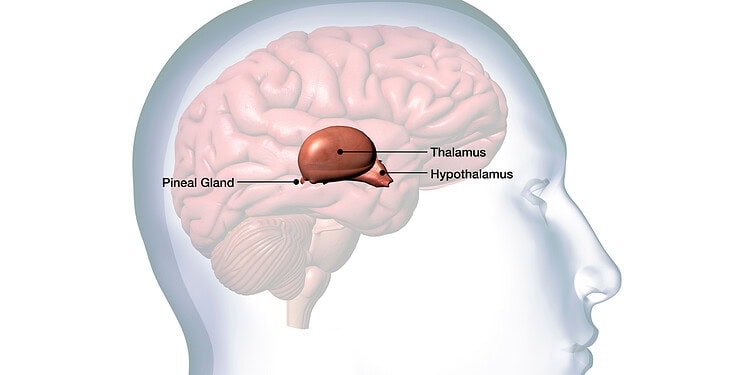Epilepsy is one of the oldest known medical conditions in human history. For thousands of years, it has been misunderstood, feared, and even stigmatized. In ancient times, seizures were often interpreted as signs of possession, curses, or divine intervention. But modern medicine has revealed a very different truth: epilepsy is a neurological disorder caused by abnormal electrical activity in the brain.
This condition affects nearly 50 million people worldwide, making it one of the most common neurological disorders. It is not contagious, it is not a sign of weakness, and it is not something to be ashamed of. Rather, epilepsy is a chronic condition that can be managed, treated, and understood when approached with compassion and science.
To truly understand epilepsy, we need to look deeper into its causes, symptoms, diagnostic methods, and treatments—while also remembering that behind every seizure is a person, a life story, and a journey toward health and dignity.
What Exactly Is Epilepsy?
At its core, epilepsy is defined as a brain disorder characterized by recurrent, unprovoked seizures. A seizure occurs when groups of brain cells (neurons) send out abnormal bursts of electrical signals, disrupting normal brain function. This sudden electrical storm can affect behavior, movement, sensations, or even consciousness.
Not all seizures are the same. Some are dramatic, involving full-body convulsions, while others may be subtle, such as a blank stare or brief muscle twitch. What makes epilepsy distinct is the recurrence of seizures without immediate provocation (such as fever, infection, or withdrawal).
Epilepsy is not a single disease but a spectrum of disorders with different causes, triggers, and outcomes. It can affect anyone—regardless of age, gender, ethnicity, or background.
The Causes of Epilepsy
The brain is an incredibly complex organ, and epilepsy can arise from many different disruptions in its structure or function. Sometimes, the cause is clear; other times, it remains unknown despite extensive testing. Broadly, the causes fall into several categories:
Genetic Factors
For some people, epilepsy is rooted in their DNA. Certain genetic mutations can alter how neurons communicate, making the brain more excitable and prone to seizures. Epilepsy caused by genetic factors does not always mean it is inherited from parents; sometimes, mutations occur spontaneously.
Research has identified dozens of genes linked to epilepsy, many of which control ion channels (proteins that regulate the flow of electrical signals in the brain). This discovery has led to a better understanding of why some forms of epilepsy run in families and how they might be targeted with precision medicine in the future.
Structural Brain Abnormalities
In other cases, epilepsy arises from physical changes in the brain. These may be due to:
- Brain malformations during development in the womb
- Scarring from traumatic brain injury
- Strokes or brain tumors
- Infections like meningitis or encephalitis
When brain tissue is damaged or forms abnormally, it can create regions where neurons misfire, leading to seizures.
Metabolic and Immune Causes
Some rare forms of epilepsy are linked to metabolic disorders, in which the brain cannot process energy properly. Autoimmune conditions, where the immune system mistakenly attacks the brain, can also trigger epilepsy.
Unknown Causes (Idiopathic Epilepsy)
In nearly half of all cases, no clear cause is identified. These are often labeled as idiopathic or cryptogenic epilepsies. Despite the uncertainty, people with idiopathic epilepsy can often lead fulfilling lives with the right treatment.
Symptoms of Epilepsy
Seizures are the hallmark symptom of epilepsy, but they can manifest in diverse ways depending on which part of the brain is affected. Understanding these symptoms is crucial not only for diagnosis but also for breaking the stereotype that seizures always look the same.
Generalized Seizures
These involve both hemispheres of the brain from the start. They can include:
- Tonic-clonic seizures: Formerly called “grand mal” seizures, these involve sudden loss of consciousness, body stiffening, and violent muscle contractions. They are often accompanied by tongue biting, incontinence, or confusion afterward.
- Absence seizures: Brief lapses in awareness, often mistaken for daydreaming, where the person may stare blankly and be unresponsive for a few seconds. Common in children.
- Myoclonic seizures: Sudden, brief jerks or twitches of muscles, often in the arms or legs.
- Atonic seizures: Sudden loss of muscle tone, causing the person to collapse unexpectedly.
Focal (Partial) Seizures
These start in one part of the brain and may or may not spread to other regions. They include:
- Simple focal seizures: Consciousness is preserved, but unusual sensations occur, such as tingling, flashing lights, or sudden emotional changes.
- Complex focal seizures: Consciousness is impaired. The person may display automatic behaviors like lip-smacking, fumbling, or repeating words without awareness.
Other Associated Symptoms
Beyond the seizures themselves, epilepsy can have wider effects on health and daily life. Some people experience memory problems, learning difficulties, mood disorders (such as anxiety or depression), and injuries related to seizures. The unpredictability of seizures can also lead to fear, isolation, and stigma.
How Epilepsy Is Diagnosed
Diagnosing epilepsy is both a science and an art. A single seizure does not automatically mean epilepsy; doctors must carefully evaluate medical history, brain activity, and potential triggers before making a diagnosis.
Medical History and Observation
The journey begins with a detailed account of the seizures: what happened, how long it lasted, what the person felt before and after, and any witnesses’ descriptions. Because seizures can be brief and confusing, accounts from family or friends are often invaluable.
Electroencephalogram (EEG)
An EEG is one of the most important diagnostic tools. Electrodes placed on the scalp measure the brain’s electrical activity. In epilepsy, characteristic patterns such as spikes or sharp waves may appear. Sometimes, prolonged EEG monitoring is needed to capture abnormal activity.
Brain Imaging
Magnetic resonance imaging (MRI) or computed tomography (CT) scans can reveal structural abnormalities like tumors, malformations, or scarring. Advanced imaging techniques may help pinpoint seizure origins in the brain.
Blood Tests and Genetic Testing
These can help identify underlying causes, such as metabolic disorders or genetic syndromes linked to epilepsy.
Differential Diagnosis
Doctors must rule out other conditions that can mimic seizures, such as fainting, panic attacks, migraines, or movement disorders. Misdiagnosis can delay effective treatment.
Treatment of Epilepsy
The good news is that epilepsy is treatable, and most people with the condition can achieve good seizure control. Treatment is not one-size-fits-all but tailored to the individual’s type of epilepsy, underlying cause, and lifestyle.
Anti-Seizure Medications (ASMs)
For many, the first line of treatment is anti-seizure medication, also called anticonvulsants. These drugs work by stabilizing electrical activity in the brain, reducing the likelihood of seizures.
There are more than 20 different ASMs, including carbamazepine, valproate, levetiracetam, and lamotrigine. Finding the right medication often involves trial and error, balancing seizure control with side effects such as fatigue, dizziness, or mood changes. With proper management, about two-thirds of people with epilepsy can become seizure-free.
Surgery
For individuals whose seizures do not respond to medication (a condition known as drug-resistant epilepsy), surgery may be an option. This typically involves removing the part of the brain where seizures originate, often with remarkable success rates. Surgery is carefully considered and preceded by extensive testing to ensure safety.
Neuromodulation Therapies
When surgery is not possible, devices like vagus nerve stimulators (VNS) or responsive neurostimulation (RNS) can help reduce seizure frequency. These devices work by sending electrical impulses to regulate abnormal brain activity.
Dietary Therapy
The ketogenic diet—a high-fat, low-carbohydrate diet—has shown effectiveness in reducing seizures, particularly in children with difficult-to-control epilepsy. Modified diets such as the low glycemic index treatment may also provide benefits.
Lifestyle Management
Treatment also extends beyond medicine and surgery. Adequate sleep, stress management, regular exercise, and avoiding seizure triggers (such as alcohol or flashing lights for some individuals) can make a significant difference.
Living with Epilepsy: Challenges and Resilience
While medical treatments are essential, epilepsy is not just a medical condition—it is a lived experience. The unpredictability of seizures can impact education, employment, relationships, and self-esteem. People with epilepsy may face discrimination or restrictions, such as driving limitations, depending on local laws.
Yet, countless individuals with epilepsy lead fulfilling lives, pursuing careers, raising families, and achieving personal dreams. Support from families, communities, and advocacy organizations is vital in breaking stigma and ensuring equal opportunities. Education about epilepsy—dispelling myths and fostering understanding—is one of the most powerful treatments society can offer.
Epilepsy in Children and the Elderly
Epilepsy is not confined to one stage of life. In children, it is often linked to genetic or developmental factors. While some children outgrow seizures, others may continue into adulthood. Early treatment and supportive care are crucial for cognitive and emotional development.
In older adults, epilepsy is increasingly common due to age-related factors like strokes, brain injuries, and neurodegenerative diseases. Diagnosis can be more challenging because seizures may resemble other conditions like fainting or dementia.
The Future of Epilepsy Care
Research continues to push boundaries in understanding and treating epilepsy. Advances in genetics may soon allow for personalized treatments based on an individual’s unique DNA. New medications with fewer side effects are under development. Brain-computer interfaces and advanced neurostimulation techniques may revolutionize seizure control.
Artificial intelligence is also being harnessed to predict seizures by analyzing brain wave patterns, potentially giving patients a warning before seizures occur. Such innovations could transform the daily lives of people with epilepsy, offering safety and independence.
Hope, Healing, and Humanity
Epilepsy is more than a medical diagnosis—it is a story of resilience, science, and hope. For some, it may mean a lifelong journey of managing seizures; for others, it may be a chapter of life that eventually resolves. But in every case, epilepsy challenges us to look at health not just through the lens of biology but through empathy and human connection.
The causes may be complex, the symptoms diverse, and the treatments evolving—but what remains constant is the human spirit’s capacity to adapt and thrive. With advances in science, stronger support systems, and growing awareness, epilepsy is no longer a mystery shrouded in fear. It is a condition that can be faced, managed, and, for many, overcome.
To live with epilepsy is to live with strength. To understand epilepsy is to move closer to compassion. And to treat epilepsy is not only to control seizures but to restore dignity, possibility, and hope.






